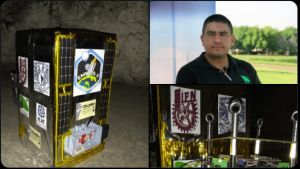“Caminos de luz. Universos huicholes” (Paths of Light. Huichol Universes), currently at the National Anthropology Museum (INAH) in Mexico City, aims to explain the world view of the Huichol or Wixáritari people of the Sierra Madre Occidental, which stretches across the states of Jalisco, Nayarit, Zacatecas and Durango. The first wall of the exhibition explains the culture’s creation legend, how the world was born of a gourd and “woven from the hair of the most ancient women.” For such a promising topic, the display fails to expand upon certain themes presented.
While the artworks on show are spectacular, it lacks a deeper explanation of the particular importance of the Huichol people to Mexican history and the great part that the Sierra Madre Occidental mountain range played in their ability to largely resist the colonial Spanish influence. This seems strange, considering how Huichol culture can be so strikingly different to others in Mexico.
Huichol artist José Benítez Sánchez’s artwork “The Vision of the Tatusi Xuweri Timaiweme” (Our Great Grandfather) is an incredibly fertile production of myth woven through yarn. The piece is paired with a few iPad displays to support the complex work and explain the importance of figures and symbols found within it.
The exhibit seems sparse, but includes both tactile pieces, with braille and textured works, for the blind; and videos about Huichol mythology for children.
“Caminos de luz. Universos huicholes” runs until April.
The exhibit is showing from 9 a.m. to 7 p.m., Tuesday through Sunday.
Entrance is 64 pesos and is free on Sundays.










